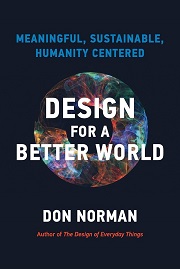I. ARTIFICIAL: ALMOST EVERYTHING SEE IS ARTIFICIAL
1. Almost Everything Artificial Has Been Designed
2. Our Artificial Way of Life is Unsustainable
3. Why History Matters
4. Precise –but Artificial– Measurements
5. If Technology Got Us into Today’s Situation, Maybe Technology Can Get Us Out
6. This Book: Meaningful, Sustainable, and Humanity Centered
II. MEANINGFUL: COMMUNICATE IN UNDERSTANDABLE WAYS
7. The Need for Meaning
8. Measurement in the Physical Sciences
9. Measuring What is Important to People
10. The Gross Domestic Product
11. What Measures Are Truly Important to People?
12. Human Behavior and Economics
III. SUSTAINABLE: REVERSE AND REPAIR THE HARM DONE TO THE ECOSYSTEMS OF THE WORLD
13. We Live in the Age of Waste
14. How Did the World Get into Today’s Quandary?
15. Sustainability Has Multiple Components and Implications
16. Design, Products, Sustainability, and the Circular Economy
17. The Practical Difficulties of Implementing Circular Design
18. Sustainable, Robust, and Resilient Systems
19. People's Understanding of Systems
20. Working with Complex Sociotechnical Systems
21. It Is Not Too Late
IV. HUMANITY CENTERED: ADDRESS ALL ASPECTS OF THE WORLD RELEVANT TO LIFE
22. Moving from Humans to Humanity
23. Democratizing Design and Development
24. People Designing for Themselves
25. Design X: An Approach to Large, Complex Systems
26. Where lncrementalism (Muddling Through) Fails
27. Incremental Modular Design
28. When Large, Multidisciplinary Projects Are Necessary
29. Dealing with Scale
30. Design: Necessary but Not Sufficient
V. HUMAN BEHAVIOR: THE MAJOR CHALLENGE
31. Why Change Is Difficult
32. People Will Mobilize for a Common Goal
33. What Must Change?
34. The Dominance of Technology
35. The Future of Technology
VI. ACTION: LEARN, REFLECT, DECIDE. ACT
36. What Can Be Done?
37. What Can We Do?
38. The Major Points of This Book
Acknowledgments
Notes
Bibliography
Index



